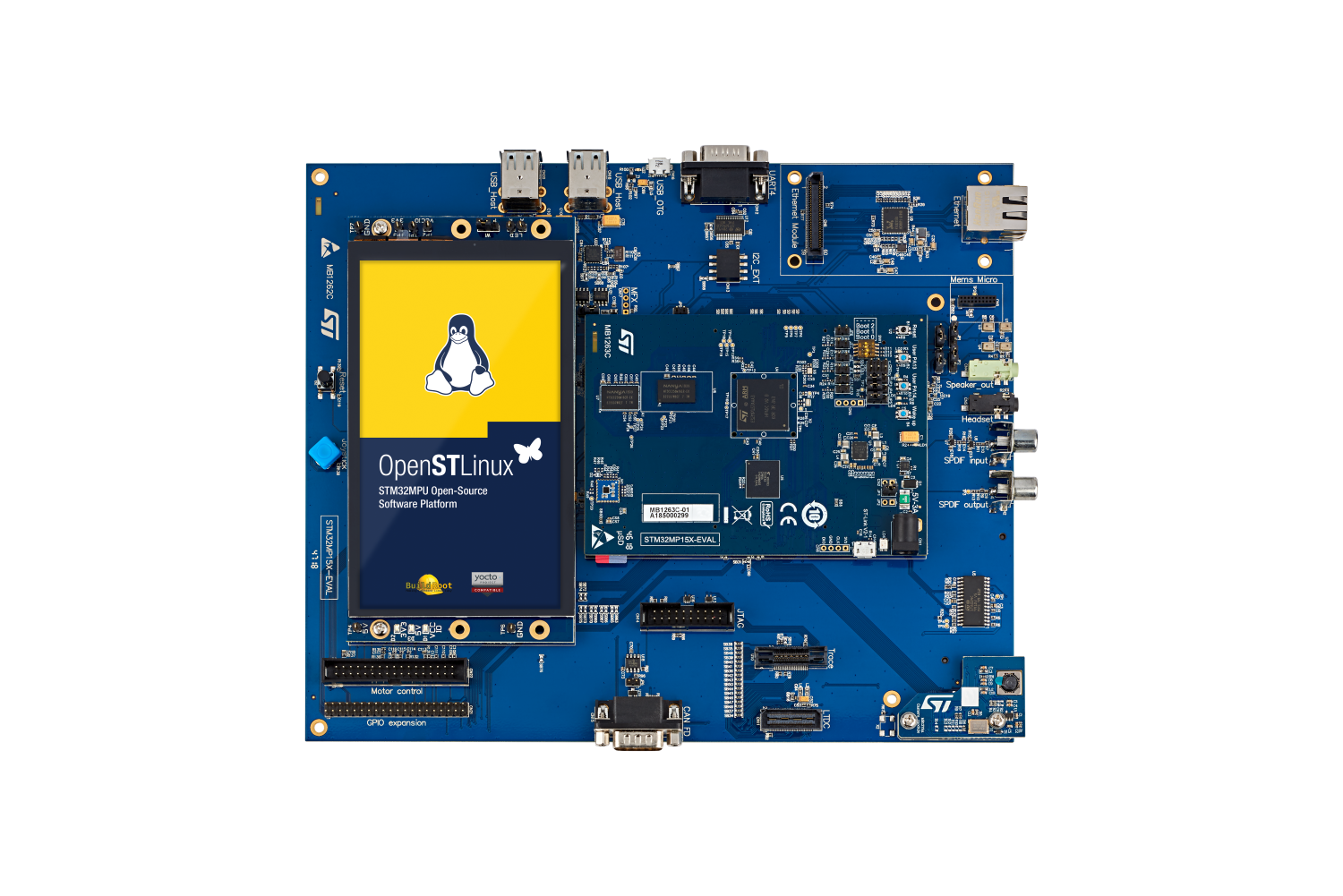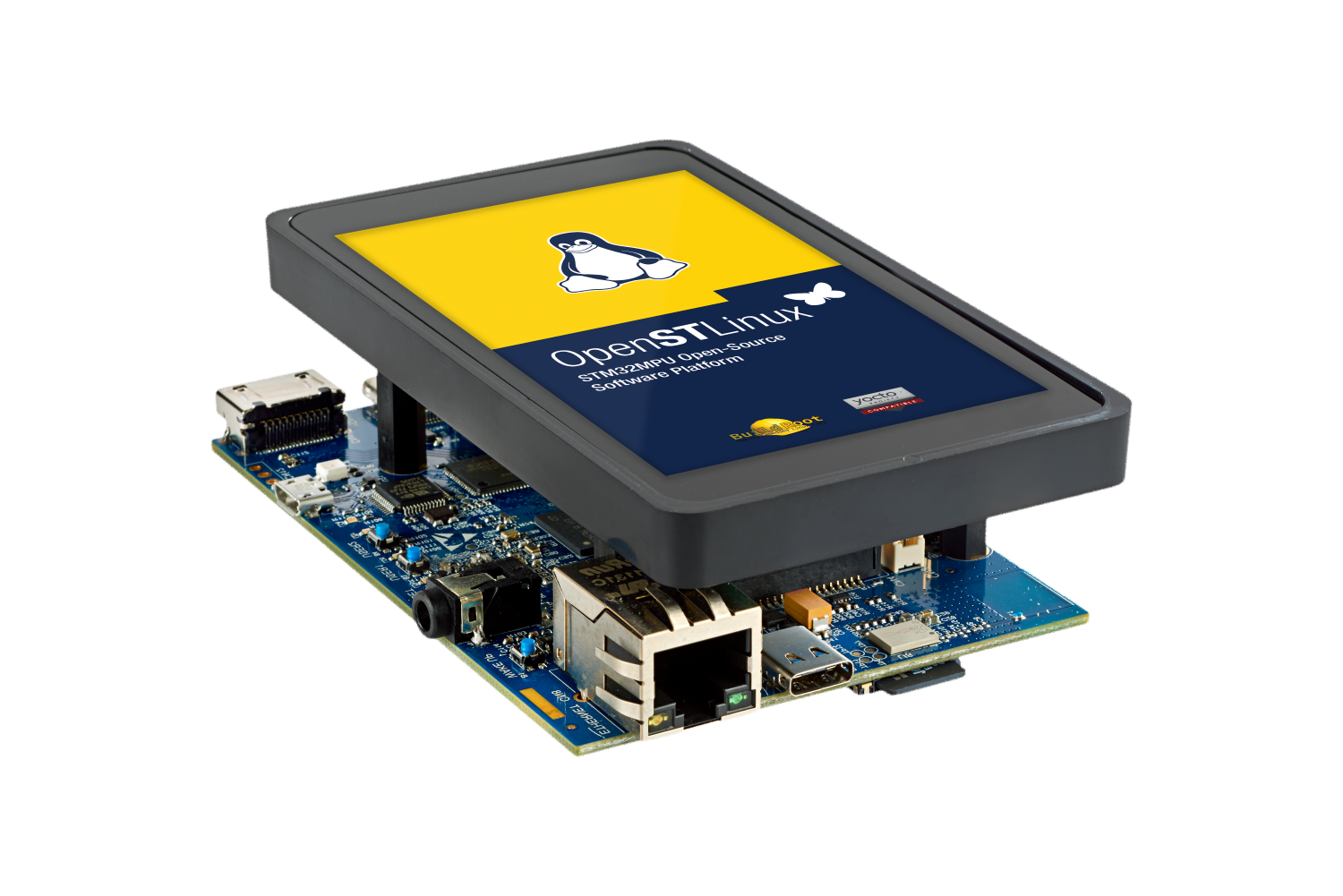STM32MP1 microprocessor series from single Arm® Cortex®-A7 up to dual Arm® Cortex®-A7 and Cortex®-M4 cores.
A general-purpose microprocessor portfolio enabling easy development for a broad range of applications, the STM32MP1 series has the ability to support multiple and flexible applications, achieving optimal performance and power efficiency at all times.
- The STM32MP1 microprocessor portfolio comes in two main configurations:
- STM32MP13x product line helps optimize the energy consumption and reduce costs while offering certified security for entry level Linux, bare metal or RTOS-based systems.
STM32MP1 microprocessor series from single Arm® Cortex®-A7 up to dual Arm® Cortex®-A7 and Cortex®-M4 cores
- STM32MP15x product line offers heterogeneous processing to support Linux and real-time applications.
The STM32MP1 series has been designed to meet the increasing demand for security in Industry 4.0, smart city and smart home applications. Beyond security, the series helps efficiently reduce energy consumption and cost. To meet industrial requirements, this series offer an extended junction temperature up to 125°.
The STM32MP1 extensive ecosystem offers many benefits. Developers can leverage OpenSTLinux, an open-source Linux distribution package, as well as the STM32Cube firmware. In addition, developers can access to a wide range of ST tools and ST partner resources, get local support and use global distribution channels.
A general-purpose microprocessor portfolio enabling easy development for a broad range of applications, the STM32MP1 series has the ability to support multiple and flexible applications, achieving optimal performance and power efficiency at all times.
- The STM32MP1 microprocessor portfolio comes in two main configurations:
- STM32MP13x product line helps optimize the energy consumption and reduce costs while offering certified security for entry level Linux, bare metal or RTOS-based systems.
- STM32MP15x product line offers heterogeneous processing to support Linux and real-time applications.
The STM32MP1 series has been designed to meet the increasing demand for security in Industry 4.0, smart city and smart home applications. Beyond security, the series helps efficiently reduce energy consumption and cost. To meet industrial requirements, this series offer an extended junction temperature up to 125°.
The STM32MP1 extensive ecosystem offers many benefits. Developers can leverage OpenSTLinux, an open-source Linux distribution package, as well as the STM32Cube firmware. In addition, developers can access to a wide range of ST tools and ST partner resources, get local support and use global distribution channels.
Applications
- Factory Automation/PLC
- Industrial HMI
- Industrial Gateway
- Robotics
- POS Terminals
- Pin pad
- Cash Registers
- Barcode/QR Code readers
- Label/Tag/Fiscal Printers
- Smart Thermostat
- Smart home Gateway
- White goods
- Small Appliances
- Metering
- Data Concentrator Power grid
- EV charging
- Access Control
- Alarm/Security Control panel
- Home use Medical Devices
- Patient Monitoring
- Patient Diagnostic Devices
- Conferencing Room Equipment
- Asset Tracking
- Vehicle OBD
Product types
The STM32MP1 series is available in six different lines, which are, on one hand STM32MP15x pin-to-pin compatible, and on the other hand STM32MP13x pin-to-pin compatible. Each line comes with a security option (cryptography and secure boot).
Discover our portfolio

Discover our development tools for STM32MP1 series
Benefits
Certified security services
- Security functions for IoT, industrial, and payment applications
- SESIP3 and PSA certified level 1 target certification
- PCI PTS POI 6.0 precertification and PCI-compliant security functions on STM32MP13 product lines
Fast time-to-market with STM32 ecosystem
- Fast and easy porting application software thanks to mainlined open-source Linux distribution with Android support available via partners
- STM32Cube firmware and embedded software libraries help developers easily get started with the same STM32Cube toolset, including GCC-based IDEs, STM32CubeProgrammer, and STM32CubeMX (DRAM interface tuning tool included for easy configuration of the DRAM subsystem)
Versatile peripherals offering
- An optional 3D graphics processing unit (GPU) provided for advanced HMI development
- Rich set of digital and analog peripherals to perform a wider range of tasks, and adaptable to a wide range of applications, improving performance and efficiency
- Optimized bill of materials (BOM) thanks to high integration, packages compatible with low-cost PCB technologies (down to 4-layer plated-through hole (PTH) PCBs) and a dedicated Power Management IC (PMIC)
An extensive third-party ecosystem
- System-on-modules based on STM32MP2 from partners ST authorized partners: UI tool providers, secure software providers, training, and software services
- Advanced tools from ST and Partners to evaluate, load, and debug









